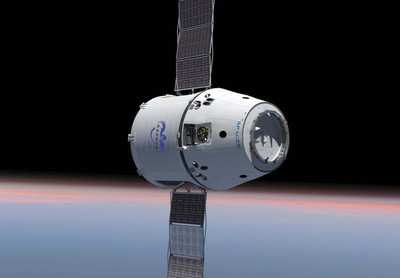Partners, Agency Look Ahead To More Advancements In 2015
NASA’s Commercial Crew Program and the agency’s industry partners completed 23 agreement and contract milestones in 2014 and participated in thousands of hours of technical review sessions. The sessions focused on creating a new generation of safe, reliable and cost-effective crew space transportation systems to low-Earth orbit destinations.

“To say we’ve been busy would truly be an understatement,” said Kathy Lueders, manager of the Commercial Crew Program. “Our partners at Blue Origin, Boeing, Sierra Nevada Corporation and SpaceX have made tremendous strides in their respective systems throughout the year and we’re happy to have supported them along their way. My team and I are excited to continue to work with our partners in the coming year.”
Blue Origin continued the development of its Space Vehicle spacecraft designed to carry people into low-Earth orbit. The company also continued work on its subscale propellant tank assembly through an unfunded Commercial Crew Development Round 2 (CCDev2) agreement with NASA, which was recently extended until April 2016. In the coming year, Blue Origin will further test its propellant tank and BE-3 engine.
Both Boeing and SpaceX began work on the Commercial Crew Transportation Capability (CCtCap) contracts to develop systems to transport astronauts to and from the International Space Station.
In 2014 Boeing closed out its Commercial Crew Integrated Capability (CCiCap) agreement and Certification Products Contract (CPC) with NASA. The company also completed its first two CCtCap milestones. Boeing worked with the agency to set an operating rhythm and path toward certification of the CST-100 spacecraft and United Launch Alliance Atlas V rocket. NASA evaluated the designs of the company’s ground-based systems that will be used to carry crews to the station, including the launch complex, crew training, countdown operations mission control facilities, landing locations and post-landing operations.
Sierra Nevada Corporation (SNC) performed incremental tests of its reaction control system that will help maneuver its Dream Chaser spacecraft in space. SNC achieved its CCiCap milestone in November and built on previous propulsion system development efforts by implementing a compact prototype thruster operating in a vacuum chamber to simulate an on-orbit environment. This year, the company also performed wind tunnel and risk-reduction testing under its CCiCap agreement and closed out its Certification Products Contract with NASA. In 2015, the company will perform the second free-flight of its Dream Chaser test article at NASA’s Armstrong Flight Research Center.

SpaceX performed two milestones, its Dragon Primary Structure Qualification and Delta Crew Vehicle Critical Design Review, in November as part of its CCiCap agreement. Under that agreement, SpaceX also performed other critical design reviews of its systems and operations this year. The company continued to provide NASA with data in preparation for the company’s Certification Baseline Review under its CCtCap contract, which was approved this month. SpaceX also closed out its CPC contract with NASA in 2014. Next year, SpaceX will perform two abort tests for its Crew Dragon spacecraft under its CCiCap agreement.
"Our partners and providers are working on real hardware and will be doing exciting tests next year,” Lueders said. “Pad infrastructures, processing facilities, hardware and crew training mock-ups, which are all key elements crucial to flying crew safely in just a few years, will take a more cohesive shape next year.”
NASA's goal for the Commercial Crew Program is to facilitate the development of a U.S. commercial crew space transportation capability with the goal of achieving safe, reliable and cost-effective access to and from low-Earth orbit and the International Space Station. With the CCtCap contracts announced Sept. 16, NASA’s goal is to certify crew transportation systems in 2017 that will return the ability to launch astronauts from the United States to the International Space Station.
(Images from file)
 Airborne 11.24.25: ANN's 30th!, Starships V3 Booster Boom, Earhart Records
Airborne 11.24.25: ANN's 30th!, Starships V3 Booster Boom, Earhart Records ANN FAQ: Submit a News Story!
ANN FAQ: Submit a News Story! Classic Aero-TV: DeltaHawk Aero Engine Defies Convention
Classic Aero-TV: DeltaHawk Aero Engine Defies Convention NTSB Final Report: Glasair GlaStar
NTSB Final Report: Glasair GlaStar ANN's Daily Aero-Term (11.22.25): Remote Communications Outlet (RCO)
ANN's Daily Aero-Term (11.22.25): Remote Communications Outlet (RCO)




